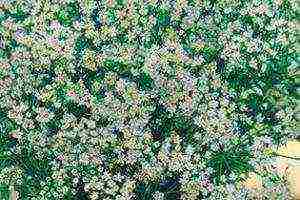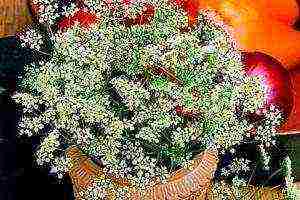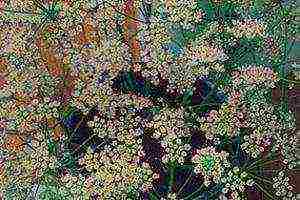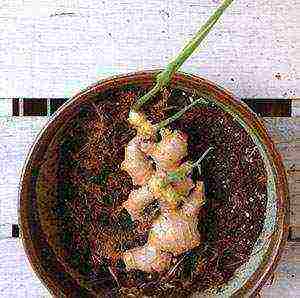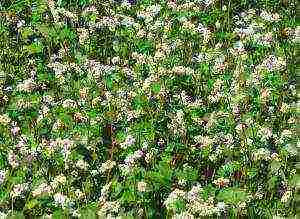Content
Anise is still rarely found in gardens, but a modest, unpretentious plant has a great future. It is well known as both a medicinal plant and a spice and can be grown successfully. Here you will learn everything about how to grow anise in your summer cottage, how to care for it and collect a fragrant crop.
Description
Anise is a herbaceous annual spicy plant up to half a meter tall with feathery leaves and white flowers, collected in lush umbrellas. These umbrellas contain small brown seeds that have a strong, pleasant taste. This is the part of the plant that is commonly used for seasoning. The leaves are sometimes used in soups and salads.

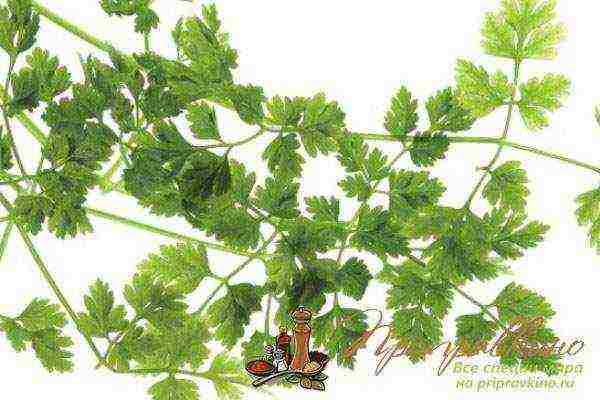
Read about the use and properties of anise in this article.
Anise is a fairly cold-resistant plant; in the garden it is grown in a seedless way, since its seedlings are too delicate and fragile and do not survive transplantation well.
Types and varieties
Anise is grown as an annual crop. Most often, in summer cottages, there are species of plants, whose homeland is the Middle East. The varieties most adapted to local conditions are widespread. Here are the characteristics of some of the popular varieties:
Anise variety |
Description |
|
"Aybolit" |
From full shoots to cutting for greens 40-55 days. The plant is of medium height, erect. |
|
"Blues" |
Mid-season, greens can be cut after 60-65 days, 115 days pass before the seeds ripen. Up to 60 cm high. |
|
"Magic Elixir" |
From germination to collection of greenery 60-65 days, the seeds ripen in 115 days. Plant height - 60 cm. |
|
"Moscow Semko" |
Late-ripe, 95-110 days pass before collecting greens. Semi-spreading bush, 65 -70 cm high. |
Place and soil
Anise prefers fertile chernozemic soils with a good structure or loose loamy and sandy loamy soils with a sufficient amount of humus and lime.
To grow anise you need a sunny area sheltered from the wind and well-drained land!
The best precursors for anise are legumes, vegetables, and potatoes. It repels aphids, so it is good to grow it next to carrots, basil.
When to plant
Sowing is carried out in the spring, after the danger of frost has passed and / or in the fall (in a temperate climate) "before winter".
Seeds are sown directly into open ground in late March and early April. The exact sowing date depends on weather changes and the end of frost.
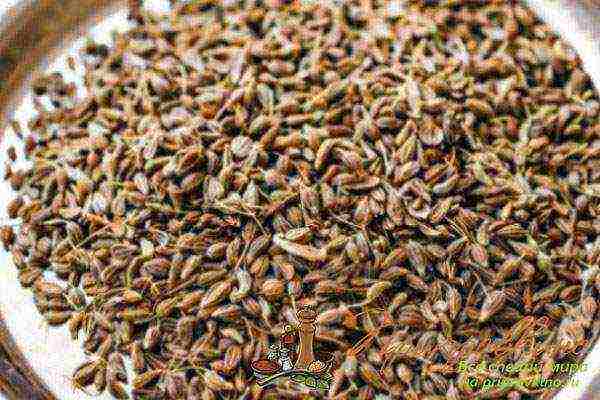
Seed preparation
The shell of its seeds contains 2-3% essential oil and 4-23% fatty oil, so they germinate for a long time. To speed up the process, before sowing, the seeds are soaked before pecking. For this:
- Take a wide plane container and put a cloth moistened with water at room temperature or epin solution in it.
- Anise seeds are placed between the layers of the canvas.
- Cover with foil, but not tightly.
- Soak for about 36 hours.
When some of the seeds hatch, they need to be slightly dried (to a loose state).
Sowing method
Anise seeds are small and easier to plant when mixed with dry sand.
Anise is sown to a depth of 3-5 cm in one of two ways, depending on the cleanliness of the site (the cleaner the site, the thicker you can sow):
- wide row - row spacing 45 cm, seeding rate 1.2 g / m²;
- solid - row spacing 15 cm, seeding rate 1.8-2.2 g / m².
There are approximately 220 anise seeds in 1 g.
Favorable average daily temperature for germination is 25 C. Under these conditions, seedlings will appear in about 14 days.With a lack of heat (3-4 C), they will germinate in a month.
At the beginning of the growing season, seedlings grow and develop slowly. They tolerate slight frosts.
Care
Until the moment when shoots with sprouts of about 2 mm appear, the beds are loosened and the aisles are weeded. If necessary, the plants are thinned out after the formation of 3-4 leaves.
Watering
In the absence of rain and after fertilization, watering is carried out. Anise growing needs regular watering until the plants are strong enough and then can tolerate dry spells well.
Top dressing
Only add fertilizer if the soil is extremely poor. When feeding, they are brought to a depth of 5–7 cm.
Top dressing with nitrogen fertilizers can be carried out before flowering in June-July at a dose of 10-15 g / m².
It is better to apply mineral fertilizers in the fall when digging a site at the rate of 20–25 g / m² of nitrogen and 25–30 g / m² of phosphorus fertilizers.
Further care consists in loosening row spacings and weeding.
Diseases and pests
Modern varieties of common anise are resistant to pests and diseases.
Most often, the plant is damaged by such pests:
- Bug
- Aphid
- Seed eater
Diseases:
- Bacteriosis
- Powdery mildew
- Rust
Harvesting
For greens, usually the upper tips of the shoots and whole stems are collected throughout the summer, but before flowering. Use in small quantities! Due to its strong, spicy aroma, it can overshadow other ingredients in the dish.
The final harvest of anise occurs around the end of August, when the umbrellas are filled with ripe brown seeds and the stems turn yellow and dry out.

The tops of the plant are cut off before the seeds fall off in dry weather, and then tied in bunches and hung in a warm, well-ventilated place. The bundles are threshed when they are dry, and the fruits are additionally dried.
Store in sealed containers in a dry place. Under such conditions, seeds used for culinary, medicinal or cosmetic purposes can retain their properties for several years.
For the further cultivation of plants from these seeds, they are used for no more than one year.
If you have a summer cottage, be sure to find a place for a garden with anise, now you have learned how to grow it correctly, store it, and it will give you health and a unique taste of dishes.
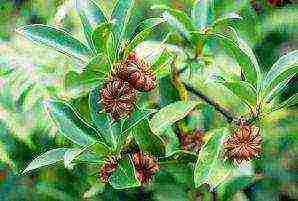
Growing anise
Anise is an annual herb of the umbrella family up to 60 cm high. Anise fruits are rich in essential oil (up to 6%). Anise is not only a favorite spice in the bakery and confectionery industry, it also finds application in the alcoholic beverage industry, it is used to flavor some pickles and pickles, and is added as a seasoning to various dishes.
Anise was used in ancient times, as evidenced by the seeds found in the pile buildings of the Stone Age. Information about him is reported by the ancient Egyptians and the ancient Greek physician Hippocrates. From distant Egypt, anise came to fields throughout Europe and to many other parts of the world. And in Ukraine, anise was introduced into culture at the beginning of the 19th century. It is currently bred almost all over the world for its aromatic fruit. The highest quality is Italian and Moravian anise. The most famous countries that cultivate it are India, Mexico, Spain, Italy and Turkey.
Anise is used as a medicinal plant that has an expectorant and disinfectant effect, and is also used against flatulence, promotes the formation of milk in nursing mothers, and improves digestion. It has an antispasmodic effect on intestinal and gastric colic. Anise also serves to improve the taste and smell of medicines and foods. Anise has an intense light, refreshing, characteristic spicy and oriental aroma. When ground, it smells sweetish, the taste is refreshing, spicy, sweetish.
In the pharmaceutical industry, anise is used to make syrups, lozenges, medicines, medicinal teas, aromatic waters and essential oils.
Ground fruits are used as a spice. Most often they are added to various cakes, cookies, gingerbread cookies, pancakes, muffins and small cookies for the Christmas table. Anise is also added to milk and fruit soups, oatmeal, sweet rice dishes, puddings, fruit salads, creams, cakes. It gives a peculiar taste to beets, red cabbage, cucumbers and carrots, various fruit compotes, especially from apples, plums and pears. Anise is found in various cough candies and many liqueurs. Fresh anise leaves are used in cooking for salads and side dishes.
Anise has a branched stem, leaves of three types. The flowers are white or pinkish, collected in large complex umbrellas. The calyx of the flower is shallow; the corolla consists of five petals and five stamens. Anise blooms in the summer months. Fruits are reverse pear-shaped two-seedlings, 3-5 mm long, grayish-yellow or greenish-brown in color, with a rough surface.
Growing anise at home
Anise is sown in March or April in rows located at a distance of 0.3 m. Mature umbrellas are cut off from ripening plants. Ripe fruits become greenish-gray in color. Sheaves or umbrellas are dried in the shade and in a draft, dry plants are threshed.
The soil: pH 6.0-6.5 (neutral), chernozems, light fertile loamy and sandy loam soils are most suitable for growing anise, good yields are obtained on dark gray forest soils, heavy clay and alkaline soils are unsuitable. Planting method: seedless, sown in late April-early May; before and after sowing, it is advisable to roll up the soil; seeds germinate for a long time, seedlings appear on the 15-17th day, and with a lack of heat on the 25-30th day, the sowing depth is 2-3 cm. Temperature regime: the culture is cold-resistant - the optimum temperature for growth and development is 20-25 ° C, seedlings tolerate frosts down to -5 ° C. With a lack of moisture, the plants develop poorly, and the setting and quality of seeds decrease. During the growing season, you can carry out 1-2 additional fertilizing with a complex mineral fertilizer such as nitrophoska at the rate of 10-15 g per 1m2. Ripening period: growing season 100 days.
Similar articles:
How to grow basil on a windowsill
How to grow coriander on a windowsill
How to grow a coffee tree at home
Growing lemon at home in a pot
Growing grapefruit at home
No comments yet. Yours will be the first!
What do we know about
anise
? Probably, many are familiar from childhood with anise drops, which are used for coughing, and perhaps someone else has heard about such an alcoholic drink - aniseed vodka. It was first made in Russia during the reign of Peter I and was one of his favorite drinks. Seeds
anise
added in the manufacture of various
blanks
- in the marinade, with fermentation
cabbage
... Let's take a closer look at this interesting plant.
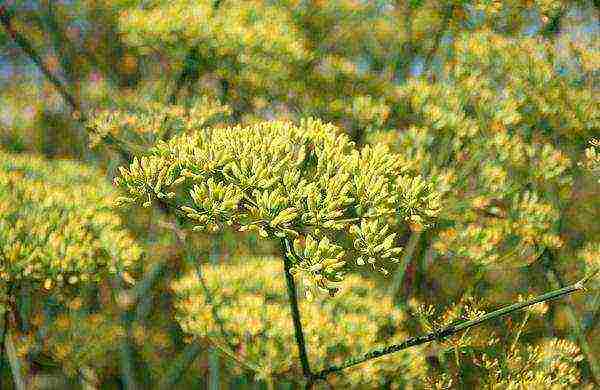
Anise inflorescences
Anise ordinary(Aniseed thigh, Pimpinella anisum) comes from the large Apiaceae family. The plant is an annual, herbaceous plant, it is assumed that its homeland is the Mediterranean or the Middle East, although it is not known for sure now - in the wild, anise is almost never found in nature.
In the countries of the Mediterranean coast, it has been bred for a long time, its seeds were found even in the buildings of the Stone Age. Anise belongs to the biblical plants along with caraway, mint and hyssop. In Russia, they began to grow it at the beginning of the 19th century.
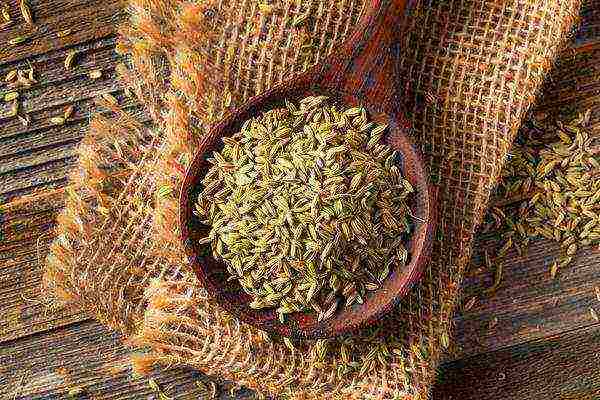
Anise seeds
In appearance, anise is a bit like dill. Its stem is branched, up to 60 cm high, leaves are feathery, delicate, the inflorescence is an umbrella. The seeds are also similar to dill seeds, they ripen in August.
Where is anise used?
This plant uses mainly seeds, their aroma resembles the smell of other spicy plants - caraway, star anise, fennel. Essential oil gives this feature to anise, its content in fruits can reach 28%.Anise is grown for this very oil.
The seeds are used in medicine, perfumery, cooking, but they are especially widely used in the alcohol industry. A wide variety of drinks are created on the basis of this plant: anise and pastis in France, anisette in Spain, sambuca in Italy, ouzo and tsipouro in Greece, arak in Iraq, and in addition there is also pernod, ricard, raki and so on.

Aniseed cookies
In cooking, it is used in baking bread, in confectionery, as well as in the fish and meat industries.
The seeds of this plant also have medicinal properties, so they are used in folk and traditional medicine, especially for diseases of the stomach and intestines, as well as for pulmonary diseases. Decoctions from anise seeds are taken for general strengthening of the body, for coughing, for hoarseness of the voice, for improving the condition of the skin (rejuvenation), for odor from the mouth.
Growing anise
You can get your own seeds for this interesting spicy plant by growing anise in the garden. He is not afraid of the cold, therefore it grows well in all regions of Russia. Ordinary garden soil is suitable for him, only heavy clay and sandy soils are not to his liking.
Anise is sown in early spring, as soon as the soil allows it to be well cultivated. On the bed, grooves or lines are made with a distance between them of at least 50 cm. The seeds are sown in the grooves in moist soil: for anise to germinate, a lot of moisture is needed.
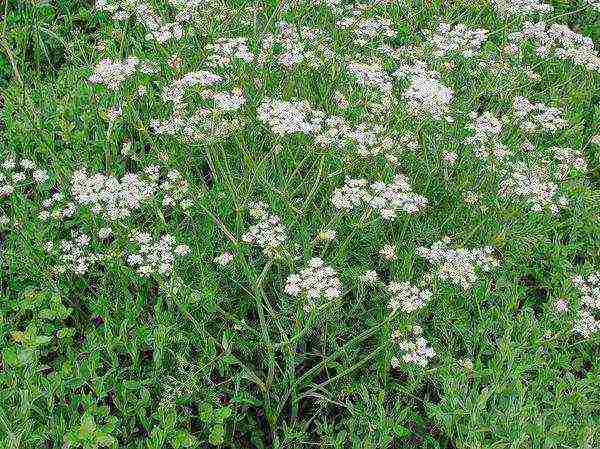
Legumes and greens can be precursors for anise. In no case should you sow after other celery, such as fennel, cilantro, celery, dill.
Care
When the seedlings grow a little, they need to be thinned out, leaving 15-20 cm between the plants. Caring for anise is not difficult, timely watering, weeding and loosening are needed.
It is important to remember that if you are late with sowing, the yield may decrease. In addition, in very cold weather, seed germination is delayed. The growing season of anise is 120-140 days.
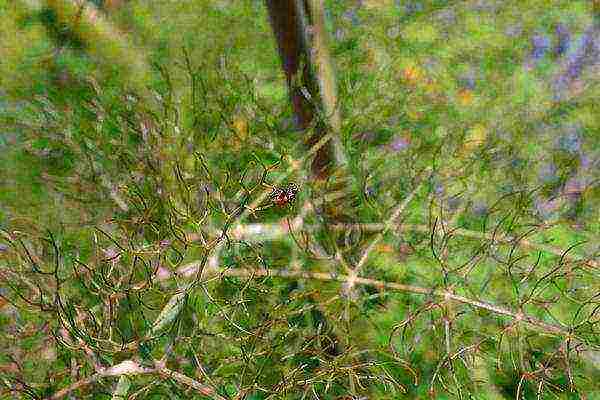
Anise Greens Anise is grown for greens and seeds. If you need greenery, then you need to regularly pinch the flower shoots. So they will branch better, and the green mass will grow more.
Anise has pests - umbrella bugs, aphids, coriander seed. Diseases also happen - rust, bacteriosis, powdery mildew. To keep plantings healthy, you need to regularly inspect the crops and remove diseased and pest-damaged plants.
Harvest
When grown for seeds, the inflorescences are left, and they ripen at the end of August. The signal for harvesting is yellowing of the stems and a change in the color of the fruits in the central umbrellas from green-yellow to brown. Collected selectively: first, the umbrellas with ripe seeds are cut, and the rest - as they ripen. You should not be late with harvesting, ready-made seeds are crumbled.
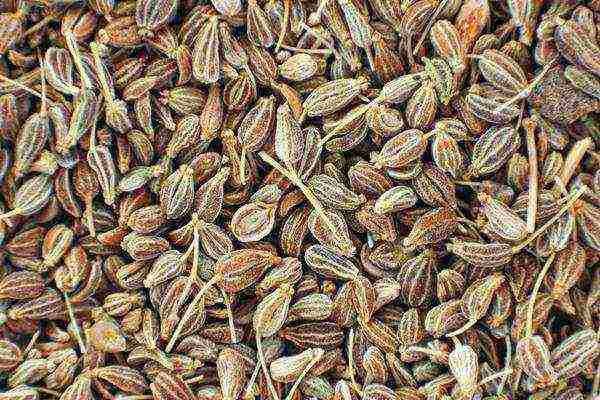
Anise seeds
The umbrellas are dried in a shaded, ventilated place, and then threshed. Seeds
anise
suitable for sowing for three years, but suitable for food and other purposes longer.
Growing anise in your garden is a snap. Try it, enlarge your collection of spicy plants.
Spicy anise is incredibly useful and in demand both in the kitchen and in traditional medicine. Its sweet aroma perfectly complements the taste in cooking, bakery and confectionery industries. Also, anise oil is part of a variety of medicines. Therefore, having a personal plot or vegetable garden, growing anise is a necessary thing. And it's not difficult at all.
When purchasing anise seeds, pay attention to their color, it should be greenish. If the color of the grain is brown or black, then it will not rise. 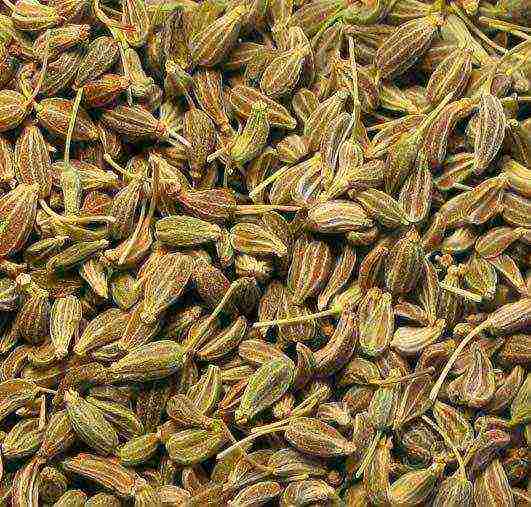 Anise seeds must be soaked before planting, since dry seeds germinate in the ground, especially cold, very slowly. To do this, the seeds are soaked in water for 2-3 days, changing the water. For complete swelling, anise needs to absorb 150% of its own moisture content. Therefore, the seeds cannot dry out.Anise takes a long time to sprout. This is due to the fact that oil channels are concentrated around the embryo, which inhibit the process.
Anise seeds must be soaked before planting, since dry seeds germinate in the ground, especially cold, very slowly. To do this, the seeds are soaked in water for 2-3 days, changing the water. For complete swelling, anise needs to absorb 150% of its own moisture content. Therefore, the seeds cannot dry out.Anise takes a long time to sprout. This is due to the fact that oil channels are concentrated around the embryo, which inhibit the process.
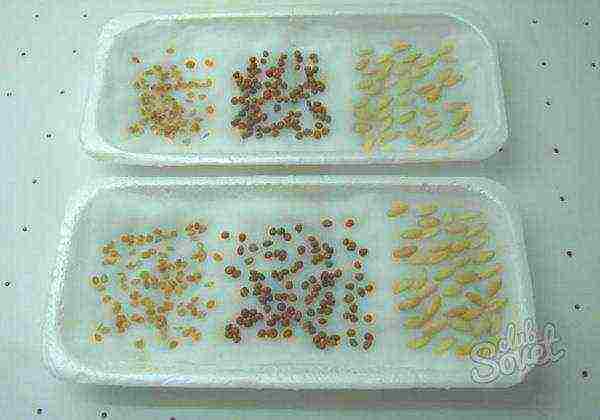
Sprouted grains are sent to the refrigerator for vernalization. The seeds should be there for about 3 weeks. Thanks to these procedures, anise will rise a week earlier on the site.  You need to sow seeds in a well-moistened soil. It should be neutral or alkaline soil. Swampy or podzolic soil will not work for this plant. The row spacing is 40-50 centimeters. The depth of the sowing groove is 3-4 centimeters. Having covered the seeds with earth, you need to roll the soil for better contact. Please note: anise is a thermophilic plant, it loves the sun, so it should be planted only in sunny areas.
You need to sow seeds in a well-moistened soil. It should be neutral or alkaline soil. Swampy or podzolic soil will not work for this plant. The row spacing is 40-50 centimeters. The depth of the sowing groove is 3-4 centimeters. Having covered the seeds with earth, you need to roll the soil for better contact. Please note: anise is a thermophilic plant, it loves the sun, so it should be planted only in sunny areas. 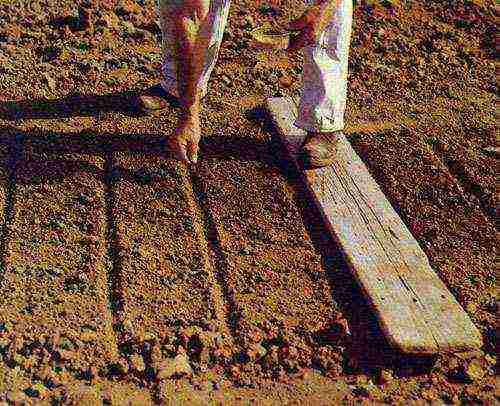 After a week with a rake, you need to slightly fence the area diagonally.
After a week with a rake, you need to slightly fence the area diagonally.
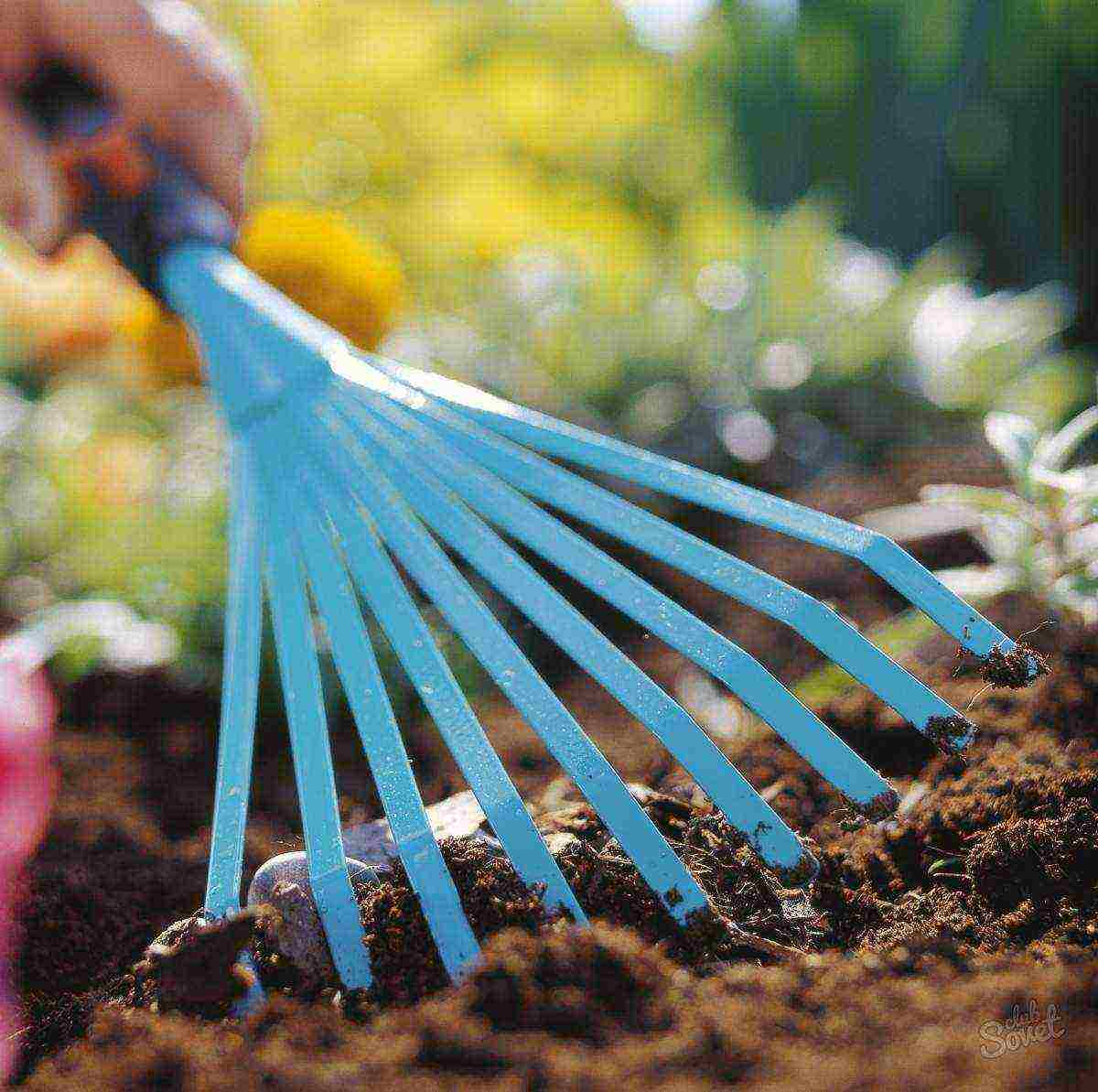
Regular and thorough soil moistening.
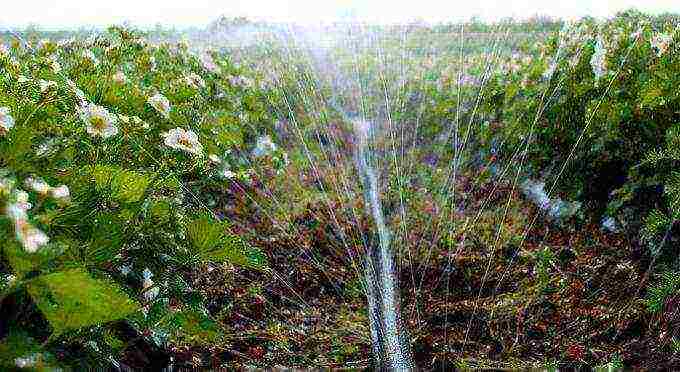
When the seedlings release the first 2-3 leaves, loosen the soil slightly with a rake, the aisles - deeper.  Thin the seedlings every 10-15 centimeters, at the same time rid the sowing of possible weeds. If the seedlings are sown too densely, you will not wait for the seed harvest.
Thin the seedlings every 10-15 centimeters, at the same time rid the sowing of possible weeds. If the seedlings are sown too densely, you will not wait for the seed harvest. 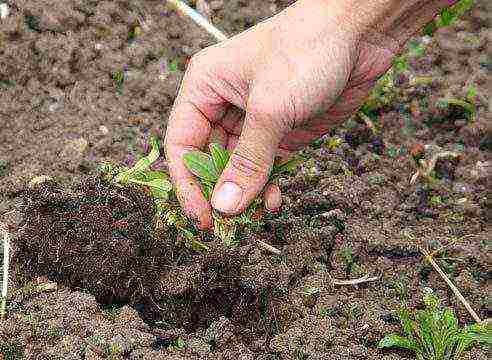 You can collect anise greens when the plant is 30-40 centimeters tall. If your ultimate goal is seeds, then they can be harvested 2.5 months after germination. The stems will begin to turn yellow, and brown seeds will appear in the center of the umbrellas.
You can collect anise greens when the plant is 30-40 centimeters tall. If your ultimate goal is seeds, then they can be harvested 2.5 months after germination. The stems will begin to turn yellow, and brown seeds will appear in the center of the umbrellas.
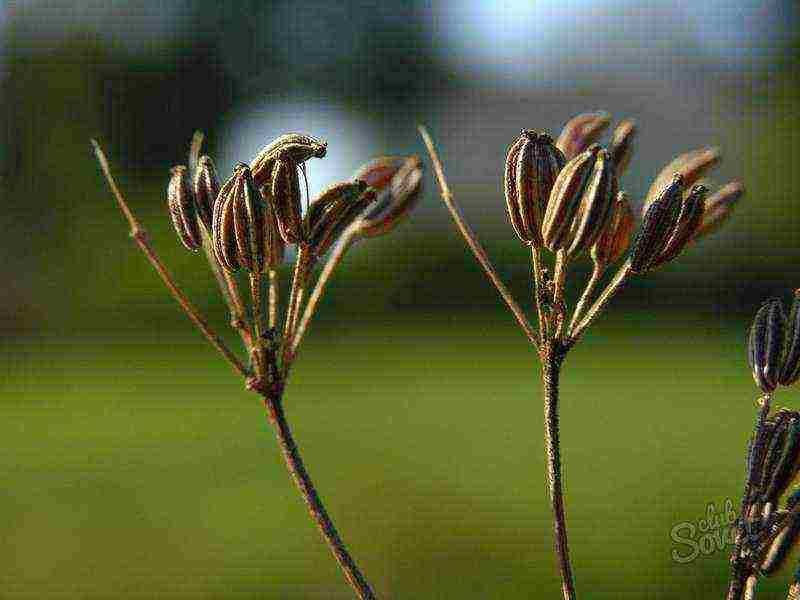
Anise is an excellent honey plant, so it is best to plant the spice near the apiary. This will benefit both the plant and beekeeping.
